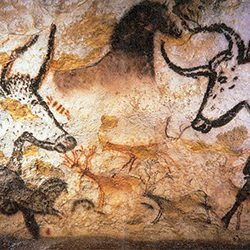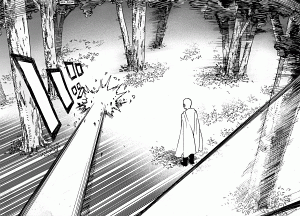Comics
Based on what I learned from this course, I chose the three words that stood out to me the most throughout this semester, COMPUTER + LANGUAGE + WRITING. The reason why this interested me is because comics nowadays have begun to incorporate technology into its creative process. In the way that I think that these three words will have some sort of impact on the development of digital technologies is that as we slowly move away from print, it will be important to understand what the next necessary step will be and how to best utilize the computer as tool to help create other works such as language and writing. Comics are a visual medium that uses still images that are arranged in a way that tell a complete story when the images are combined together. as McCloud defines, are a “juxtaposed pictorial and other images in deliberate sequence, intended to convey information and/or to produce an aesthetic response in the viewer” (Understanding Comics, 9.) Comics are also a way to incorporate iconology. Iconology is to a way for comic artists to have their characters represent a variety of different things. For example, a simple circle with two dots and and a curved line towards the bottom. This would register to someone as a simplified face. Before comics were created, we still used drawings to convey language. Take cave drawings for example. I distinctly remember talking about this in class, but back in the prehistoric days, they used cave drawings to either tell a story, tell others of where to find food or to warn them of danger in certain areas.

While the meaning of the drawings remain ambiguous, it could be called an early prototype of comics. Another example that McCloud uses in Understand Comics is the hieroglyphics found in Egypt. These hieroglyphics are even more similar to comics in that both are order in a certain sequential order.

Besides hieroglyphics and cave drawings, there is also writing, printing and computers. Before writing and printing was invented, there has always been a need to document historical stories through orality and art. It was around Plato’s time that writing began. Back then there was an argument that writing will encourage people to rely solely on the written word to remember. Oddly enough, the argument against writing is similar, as Ong states, to the argument against computers today. Both inventions are called “artificial” as they are meant to improve the daily lives of people. Back in the 70’s, the computer was furthered by the fact that there was a need to solve difficult and elaborate equations that are difficult for people to solve without help. However, in the 90’s, when computers became accessible to everyone, the possibilities of what computers can do as a tool skyrocketed, including creating art. Between these images, there are sections that McCloud calls gutters that help the reader understand the transitions between panels. Comics are also drawn in ways that are meant to be cinematic, which makes it easy to translate these panels in a more cinematic medium. In Understanding Comics, there are different types that McCloud mentions in the text. One being Aspect to Aspect, Action to Action and Scene to Scene. I would call this a type of cinematic language of this is what comic artists use to create the setting and background for their comics. Also, the more cinematic the comics are, the more easy it will be as to remake these comics into a film or a tv medium. A popular trend that we have seen with the Marvel and DC.
These comics are also drawn in a way that it would make it only to easy to remake them into a film or a tv series.
Take this gif for example. This gif is comprised of panels drawn by a mangaka who drew the series, One Punch Man. The panels, when put together, create one smooth motion that almost becomes an animated scene.

In conclusion, comics are a sequential art that relies on the placement of the panels to help guide the story along. Between the panels, the gutters also serves to silently inform the reader that movement is occurring between these spaces. While comics weren’t officially created until 1933, there has been a history where a form of comics have been used to convey a story. The tools that aided the creator may have changed, but many of the concepts remain the same.